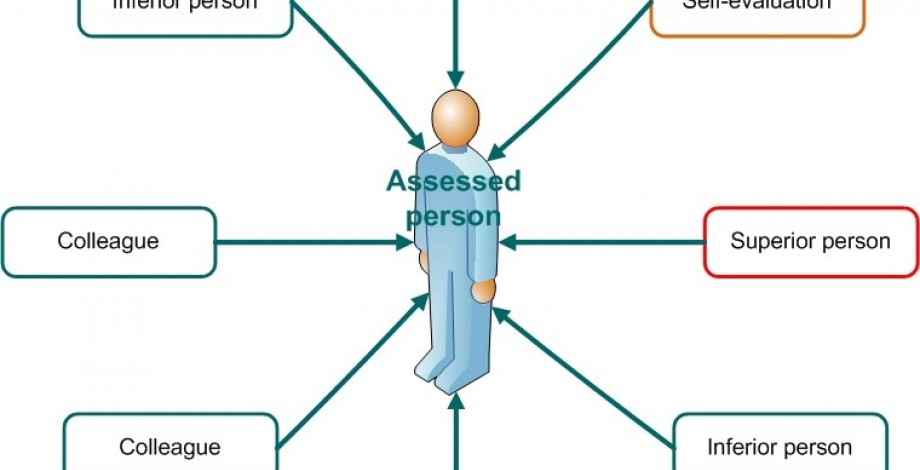„An awareness of any disparity between the way we see ourselves and the way we are seen by others increases an awareness (knowledge) of our selves, and it is the boosted self-awareness that is key in making a manager perform on the top level."
J. D. Turnow
The modern-day era lays emphasis on assessment of the labour efficiency. Performance assessment definitely is not an easy affair. It is strictly society-specific, and an assessor needs to find their own way of achieving an impartial assessment.
History of 360° method
The method of 360° feedback makes a relatively new feature of the labour efficiency management. Back in 1998, it was being used by as few as 11% of organizations in the US territory, yet it was soon to change: the method has become popular thanks to its relative detachment. This method has made its way into our domestic human resource procedures largely through mother companies of multinational corporations.
Principle of 360° method
How to measure both strengths and weaknesses of a worker´s labour efficiency?
The answer can be found by means of various methods of employee assessment. The New World has shown that the traditional „boss-down“ approach, an assessment performed by the immediate superior only has been dying down. There has been a new, more suitable and more convenient approach in assessing managerial competencies called a 360° feedback.
The assessment method of 360° feedback provides the worker and their superior with an ultimate chance to get a labour efficiency feedback. Its essential benefit is understanding how a particular employee is perceived from different perspectives. 360° feedback has ranked among the tools that can help organizations grow and that mirror the way their people function. Thanks to this tool, organizations are able to implement unavoidable changes and react to ever-changing conditions in the business environment. It brings a higher degree of detachment, directs attention to the internal customers, influences corporate culture. It brings stimuli for development, too.
It is based upon complex assessment „from every possible aspects“ – from their superior, workmates, colleagues, subordinates and customers, even themselves. Information acquired from their own ranks represents the most precious thing they can give them. They express their views on material aspects of his or her managerial work and conduct. In order to implement 360° feedback method as a systemic tool many steps have to be taken to achieve the good result expected.
Application procedure step by step
Stage 1 - communication, getting identified with the method - an emphasis has to be placed on explanation and clarification of benefits. Proper communication will prevent initial mistrust which is still much engrained in our
Czech national temperament.
Stage 2 - assessment process - the involved assessors of all levels will elaborate an assessment, with the assessed person performing self-assessment. The outputs will be submitted to the assessed person´s immediate superior.
Stage 3 - assessment evaluation - the assessed person´s superior will process the outputs and summarize them.
Stage 4 - feedback - the superior will sensitively confront the assessed person with the facts found. Together with the assessed person, he or she will update their education needs and set down SMART objectives.

Legal aspects of insolvency and reorganization

The Real | Interim Manager for Your Changes

Manager work model
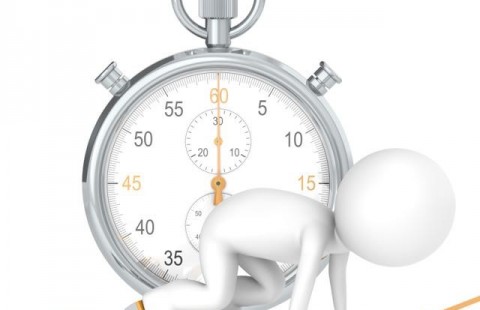
Time management - making use of time effectively
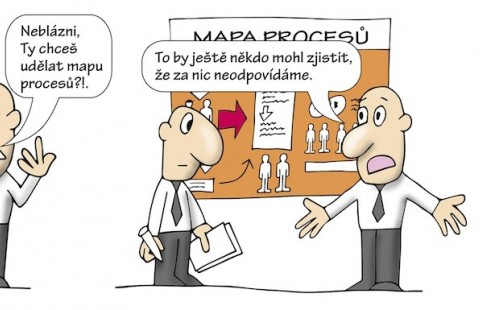
Jak správně tvořit mapu procesů

Modelling and setting the processes and procedures - ISO 9001

Training - preparation of the SWOT analysis and strategy
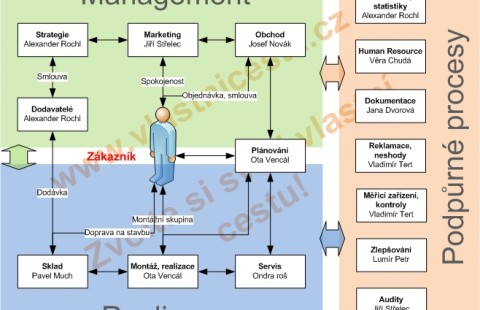
Company Management System of Quality Step by Step - ISO 9001
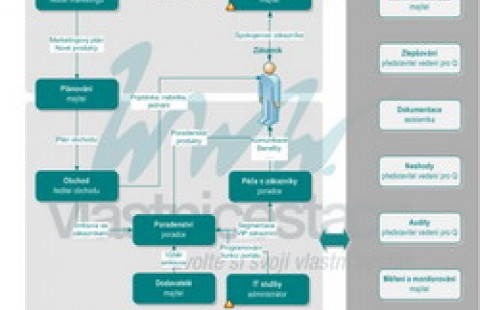
Process map acc ISO 9001 - business offer
The process of 360 degree method of employee assessment is based upon absolute anonymousness and confidentiality. The assessors should not be afraid to offer even negative feedback, as their statements will be made into the average value along with other assessors´feedbacks. If the feedback is provided in good faith and if it is accepted by the manager in question, who is ready to use it for their own professional improvement, then everything is going to produce good ends.
Any mistrust arisen in the process of assessment can compromise validity of the whole assessment. This is why it is appropriate, while preparing and implementing the assessment, to exploit services of an external consultant who will guarantee impartiality in the entire process.
When implementing this method, it is essential to communicate the event across the company as part of the firm´s climate. Indeed, there is nothing worse than the case of a method or an approach, no matter how good, becoming just a „process technicality“ , a mere notch cut by an auditor performing a system revision. In this instance surely a golden rule should apply that the method is here to serve us and not the other way round.
People on all levels of management who participate in the evaluation should understand the reason why the whole assessment is being performed and what the output and benefit will be like.
If, due to a lack of time, this stage has not been digested enough by the company´s workers, then it may well happen that people will not identify themselves fully with the objective and they will just work to rule.
It is up to interpersonal communication skills of the manager who will conduct the final evaluation interview with the assessed person to make him or her sensitively yet clearly familiar with the feedback. At this stage, above all, it is necessary to realize that we are moving towards further development of that worker´s potential related to education processes in the company. The worker can be confronted with the results from their environment which correct their self-esteem and self-assessment. New objectives are set down for the worker, however, ones they are supposed to identify themselves with. Only then they can endorse them inwardly and regard them as realistic.
Examples of attributes that can be assessed:
- Communication - timely, feedback communication towards both external and internal partners
- Creativity - the worker comes up with novel ideas, innovates the processes
- Collaboration - the worker is a team player, respects the other members involved in the project
- Leadership - they use their leader competencies in keeping with their responsibility
- Mode of assessment: - a three-scale number, for example
Example of the 360° method application
Utilizing a model situation, I am now going to describe how the method works:
Mirek´s superior Tomáš, who is a finacial manager, appoints three assessors to evaluate Mirek, his subordinate. As Mirek is a chief accountant, Tomáš is going to choose those assessors from among his colleagues of different levels of management. Lenka is a finacial accountant subordinate to Mirek, Vlaďka is a personell manager who often works on operational affairs, likewise Martina who is an assisstent director.
These three chosen assessors will receive spheres (points, attributes) from Tomáš in which they will evaluate Mirek´s actions. The results of their evaluation efforts will be handed down to Tomáš who will also get Mirek´s self-assessment in the same spheres. Finally, Tomáš himself will produce his own assessment of Mirek.
The entire results to be summarized by Tomáš according to a pre-agreed scheme.
Subsequently, Tomáš will sensitively make Mirek acquainted with the results while steering clear of giving out the assessors´ names. Tomáš will highlight the positive aspects and outline further career courses which would motivate Mirek to stay the company´s working environment. In Mirek´s case, it is shadowing the position of a financial managera with a view to prepare him to become Tomáš´s successor. Tomáš and Mirek will propose inputs to the education plan. Mirek has to improve his English. Tomaš will then pass this requirement on Vlaďka for her to carry out this long-term educational project.
Written by "Pavla Vampolova":vampolova.pavla@seznam.cz, a consultant
Sources used:
- Mgr. Šárka Pojerová, www.expertis.cz
- Michael Armstrong, Human Resource Management

